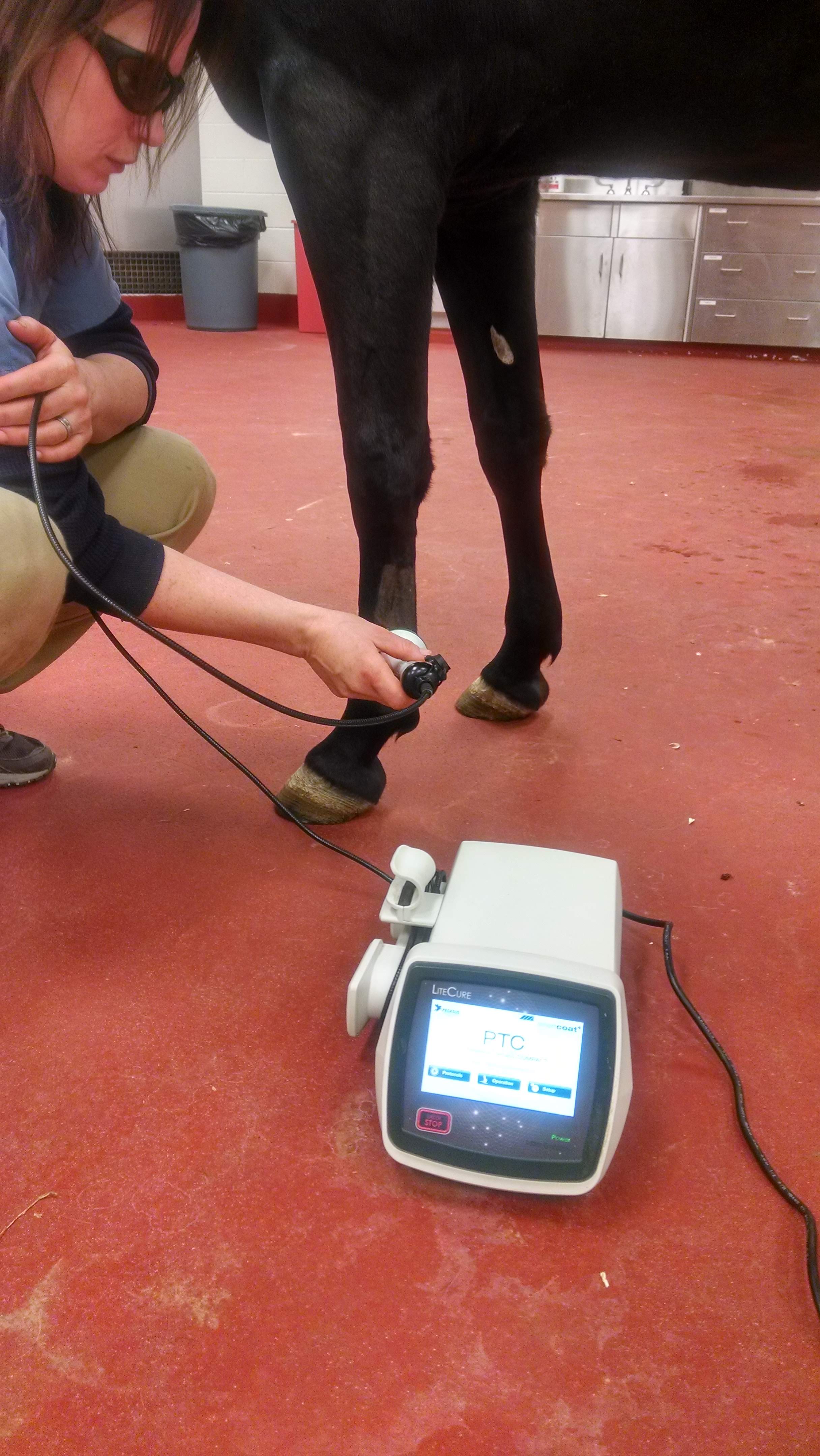Equine Therapy for Kid: Psychological and Behavior Assistance Clarified
Equine Therapy for Kid: Psychological and Behavior Assistance Clarified
Blog Article
How Laser Treatment in Horse Treatment Is Revolutionizing Vet Care for Equines
Laser therapy has arised as a transformative strategy in equine veterinary treatment, supplying a non-invasive service that speeds up healing and enhances overall health. The transportability and convenience of laser treatment tools better underscore their expanding necessity amongst veterinarians.

Recognizing Laser Treatment
Comprehending laser therapy is essential for valuing its duty in equine therapy. Laser therapy, also called photobiomodulation, entails the application of particular wavelengths of light to tissues, which can result in numerous biological effects. This restorative technique utilizes the power of light power to permeate the skin and underlying tissues, stimulating cellular procedures and improving tissue fixing.
The technology behind laser therapy is based in the principle of photochemistry, where photons are soaked up by chromophores within cells, resulting in increased ATP manufacturing and modulation of responsive oxygen species. This, subsequently, promotes mobile proliferation, reduces swelling, and accelerates recovery. Veterinary practitioners make use of different types of lasers, consisting of low-level lasers (LLLT) and high-power Course IV lasers, depending on the specific healing goals and the nature of the equine condition being treated.
Various laser wavelengths and power settings are meticulously chosen to target numerous tissue midsts and accomplish desired clinical outcomes. Security protocols are vital, as incorrect usage can lead to thermal damage or suboptimal healing effects. Therefore, a comprehensive understanding of laser therapy's systems and applications is critical for its effective application in equine veterinary method.
Advantages for Horse Health
The myriad benefits of laser therapy for equine health and wellness incorporate enhanced healing, pain decrease, and enhanced mobility. This advanced treatment technique leverages details wavelengths of light to penetrate tissues, promoting cellular feature and promoting fast cells fixing. The non-invasive nature of laser treatment ensures minimal tension and discomfort for the equine, promoting a smoother recovery process.

By lowering inflammation and discomfort, and improving cells repair work, laser treatment helps in bring back joint feature and muscle mass adaptability. Thus, laser treatment stands as a transformative device in modern-day equine vet treatment.
Common Problems Dealt With
Laser therapy has become a functional treatment choice for a selection of usual equine problems. Amongst these, bone and joint injuries are particularly open to laser treatment. Soft tissue injuries, such as tendonitis and ligament stress, gain from the anti-inflammatory and analgesic effects of laser treatments, which speed up recovery and lower discomfort. Additionally, laser therapy works for problems like osteo arthritis, where it aids reduce joint inflammation and advertise cells fixing.
Wound administration is one more area where laser treatment has shown significant imp source guarantee. Chronic wounds or slow-healing abscess can be particularly challenging in horses, yet laser treatment enhances mobile regrowth and enhances blood circulation, thus speeding up the healing process. Additionally, laser treatments have been successfully used in managing hoof conditions such as laminitis and abscesses, relieving discomfort and advertising faster healing.
Horse professional athletes commonly experience performance-related problems like muscle pain and stress and anxiety fractures. Laser therapy help in minimizing muscle exhaustion and quickens the healing of micro-injuries, thus ensuring that steeds go back to come to a head efficiency faster. By attending to these diverse conditions, laser therapy is changing the landscape of veterinary treatment, providing a non-invasive, reliable choice to typical treatments.
Modern Technology Behind Laser Treatment

Laser tools made use of in veterinary medicine commonly make use of low-level laser therapy (LLLT) or chilly YOURURL.com laser treatment. Unlike high-powered surgical lasers, these tools run at lower energy levels, enhancing therapeutic benefits while lessening thermal damages. The power from the laser light stimulates adenosine triphosphate (ATP) production, improves cellular metabolic process, and increases cells repair processes.
Modern laser treatment equipment for equine treatment is developed with adjustable settings to satisfy the certain demands of various cells and problems. Equine Therapy. Parameters such as wavelength, power density, and treatment duration can be finely tuned, offering tailored restorative services. Furthermore, innovations in laser innovation have actually resulted in the advancement of portable, handheld tools, making it easier for veterinarians to provide therapy in a selection of setups, from centers to stables. This technological development is a foundation in the transforming of equine veterinary care.
Success Stories and Study
Showcasing the concrete benefits of laser treatment, many success stories and instance research studies illuminate its transformative impact on equine wellness. One such situation involves a pureblood racehorse suffering from persistent tendonitis. Traditional therapies yielded very little improvement, yet after integrating laser therapy right into the regimen, the steed exhibited substantial decreases in swelling and pain within weeks, inevitably returning to affordable auto racing.
One more see here now engaging instance features a dressage horse identified with extreme pain in the back, restricting its performance. A veterinary team utilized low-level laser treatment (LLLT) to target the swollen locations, resulting in marked enhancement in versatility and a remarkable decline in discomfort. Over several sessions, the horse restored its peak type, showcasing the efficiency of laser treatment in addressing musculoskeletal issues.
Furthermore, a research study performed at a leading equine facility examined 50 horses with various soft tissue injuries treated with laser therapy. The results were striking: 85% of the equines showed increased healing times and enhanced flexibility. These cases highlight the convenience and effectiveness of laser therapy in equine medicine, using a non-invasive, scientifically-backed strategy to boosting recovery and performance in horses.
Conclusion
Laser therapy is revolutionizing equine veterinary treatment by providing a non-invasive therapy that accelerates recovery, reduces inflammation, and reduces pain. With its effectiveness in treating a series of conditions, from musculoskeletal injuries to persistent ailments like osteo arthritis, this technology significantly enhances equine health and wellness and wheelchair. The transportability and adaptability of laser treatment additionally highlight its transformative effect on vet techniques, solidifying its duty as an essential device in contemporary equine healthcare.
Report this page